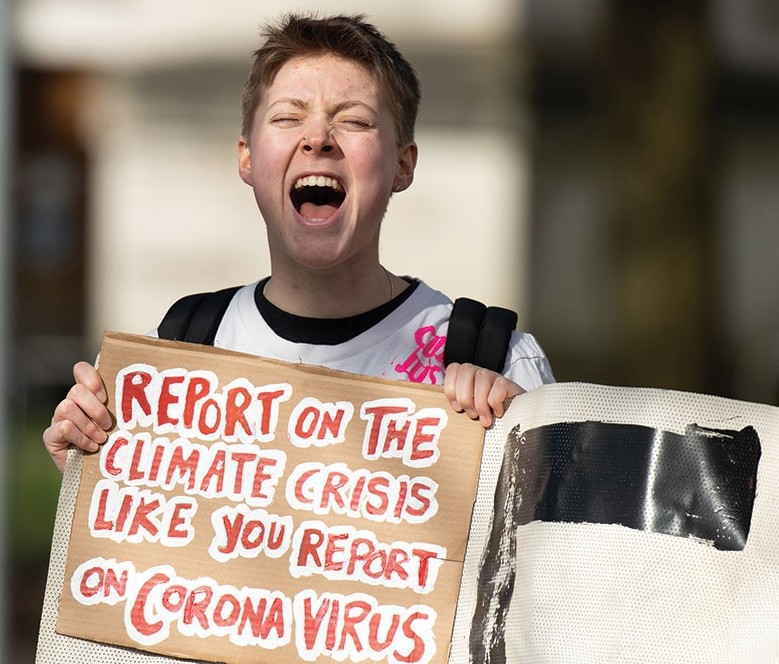Sadly, many parallels can be drawn between Covid-19 and climate change. Both require regional and international coordination. Both are driven by environmental destruction and human impacts on wildlife. Both affect the wealthy and the poor differently. And both require significant investment to avoid dire consequences.
For climate change, the European Union must invest an additional €175bn–€290bn (US$190bn–US$315bn) annually to meet its climate and emissions targets. Globally, an estimated €6.4 trillion a year (US$6.9 trillion) is required to meet the Paris Agreement goals by 2030. The need to invest in environmentally sustainable activities is clear, but until recently there has been no single, reliable way to identify what they are.
But now there is, in the form of the EU’s unified classification system for sustainable activities. The Taxonomy is part of the European Commission’s 2018 Action Plan on Financing Sustainable Growth and its Renewed Sustainable Finance Strategy. It supports the European Green Deal and offers a science-based way to classify and compare sustainable investments while reducing opportunities for ‘greenwashing’. It is designed to meet EU climate change mitigation goals, including net-zero greenhouse gas emissions by 2050, and aligns with global ambitions such as in the Paris Agreement.
All this makes the Taxonomy a valuable resource and a means for closing the funding gap. By providing clear criteria for identifying environmentally sustainable economic activities, it takes the guesswork out of sustainable investing and offers a way for companies and investors to meet climate goals.
The Taxonomy is a product of political and technical processes. It will become law via the Taxonomy Regulation, with political agreement on the proposed text achieved in December 2019. It focuses on economic activities (rather than on companies). Under the proposed regulation, an activity is considered environmentally sustainable only if it:
- ‘substantially contributes’ to at least one of six environmental objectives (see panel)
- does no significant harm to any of the other objectives
- meets minimum social safeguards.
The proposed regulation requires certain sustainability-related disclosures. These requirements apply to ‘financial market participants’ (eg, investors) selling financial products in the EU and large companies within the scope of the EU non-financial reporting directive (currently over 6,000 entities).
The Taxonomy takes the guesswork out of sustainable investing and offers a way for companies and investors to meet climate goals
The six golden goals
The Taxonomy regulation’s six environmental objectives are:
- climate change mitigation
- climate change adaptation
- sustainable use and protection of water/marine resources
- transition to a circular economy
- pollution prevention and control
- protection and restoration of biodiversity and ecosystems.
The European Commission formed an independent Technical Expert Group on Sustainable Finance (TEG) to develop technical screening criteria for meeting climate change mitigation and adaptation objectives while assessing the do-no-significant-harm requirement for the other objectives. In March 2020 the TEG published its final recommendations, which include a technical report, a technical annex, and a summary spreadsheet mapping industry classifications (based on the EU’s NACE system of classification of economic activities). A future Platform on Sustainable Finance will, among other things, identify the economic activities and criteria for the remaining objectives.
Taxonomy laid bare
The technical report reviews the Taxonomy design and offers implementation guidance for companies and investors, including: adaptation case studies; voluntary disclosures; methodologies for meeting the disclosure requirements; assessing an investee’s social safeguards, or Taxonomy alignment, with insufficient data; and obtaining external assurance (although not yet required, this could change).
At the heart of the Taxonomy is the technical annex, which includes technical screening criteria for 70 mitigation and 68 adaptation activities across sectors that account for 93.5% of EU greenhouse gas emissions; methodologies for applying the criteria; references to relevant legislation or frameworks; and rationale for including the activities, criteria, metrics and thresholds.
The reports incorporate feedback received on the TEG’s initial proposals (see also ‘Green machine’, AB, April 2020) and the Taxonomy Regulation’s final wording. For example, the proposed regulation excludes power generated by solid fossil fuels. In addition, the TEG recommends excluding fossil fuel storage and transport, and requiring energy generation from gaseous or liquid fossil fuels to meet stringent thresholds to be Taxonomy-eligible.
To stay effective, the Taxonomy must continuously evolve, so the TEG has recommended future amendments, including:
- prioritising adaptation guidance and do-no-significant-harm criteria to include more economic activities
- adding activities to, and considering links between, existing sectors
- addressing discrepancies between company and investor requirements
- increasing the stringency of criteria to match changing climate goals
- including social objectives and activities that reduce environmental harm (without calling them ‘green’).
The Taxonomy’s focus is the EU, although it could have global application. However, some countries are developing their own taxonomies. International consistency in environmental criteria is crucial for avoiding market confusion and tackling climate change appropriately, so the TEG also recommends ways to harmonise across taxonomies.
What next?
The TEG will continue to advise the European Commission until the Platform is operational (anticipated by the end of 2020). Disclosures will be required once the Taxonomy Regulation becomes law; the approval process is currently under way. Actual implementation dates are staggered by objective and user, with the TEG expecting full implementation by 2023.
Climate change should not take a back seat to Covid-19. Instead, we can learn from the similarities between these crises, including the value of early action. Tools such as the Taxonomy can help us do just that – before it is too late.
Taxonomy regulation disclosure requirements
| Who | Investors | Non-financial reporting directive | |
| All | Non-financial | ||
| What | For products that are sustainable or have environmental characteristics:
|
How, and to what extent, activities are Taxonomy-aligned | Proportion of revenues (with exceptions) and capex (and opex) from Taxonomy-aligned activities |
| Where | Reports, websites, pre-contractuals | Non-financial statements | |
| When | First round: by 31 December 2021
All objectives: by 31 December 2022 |
Throughout 2022
Throughout 2023 |
|






